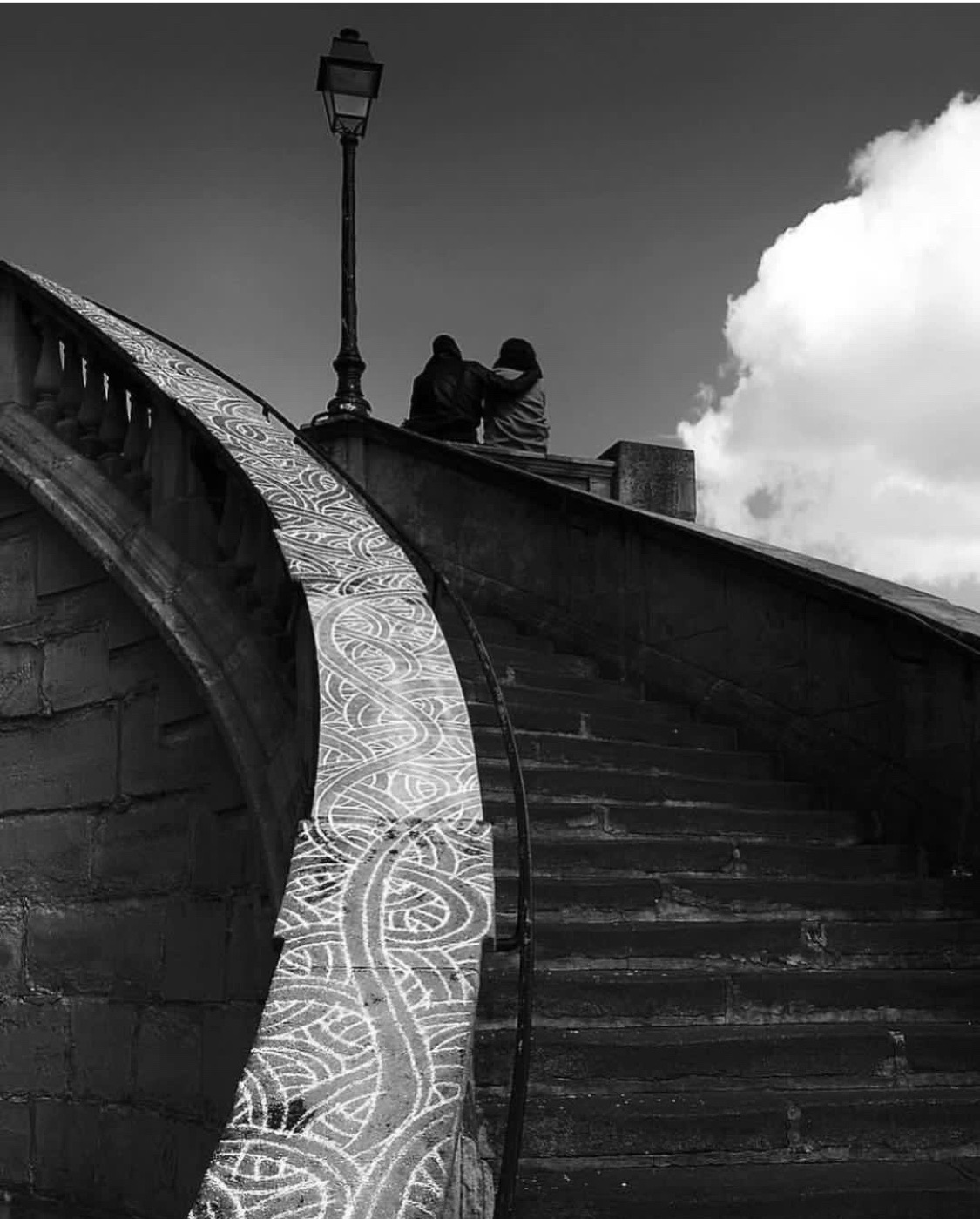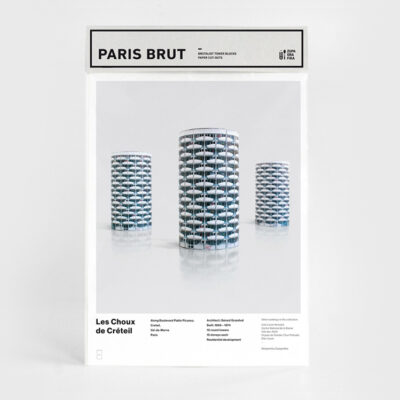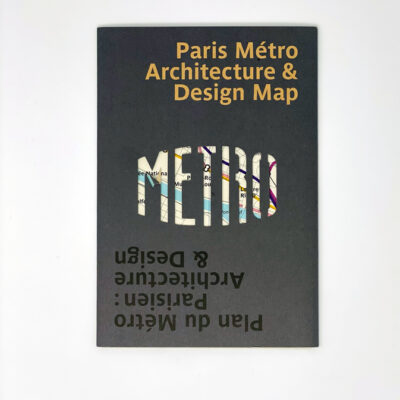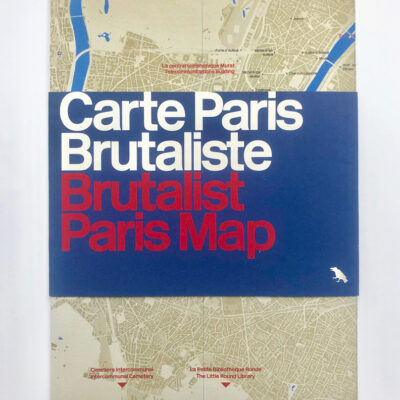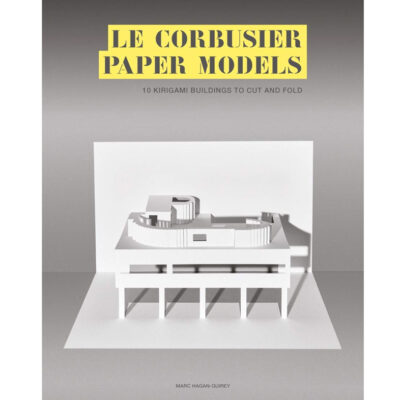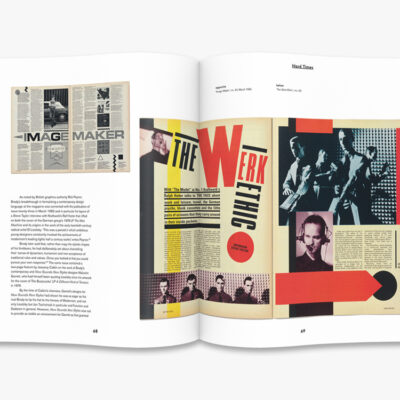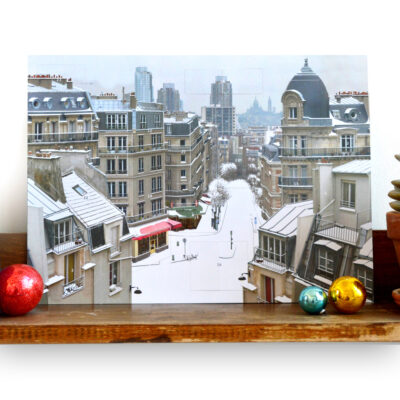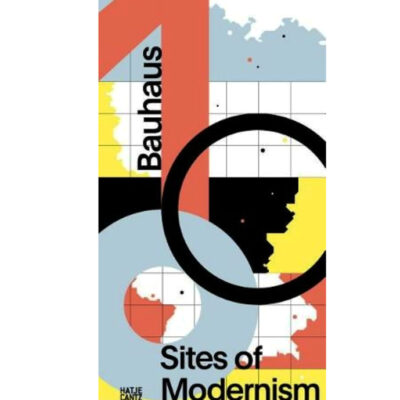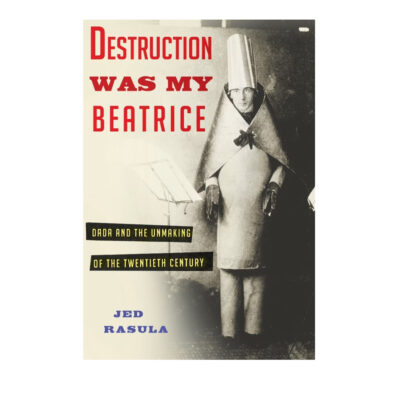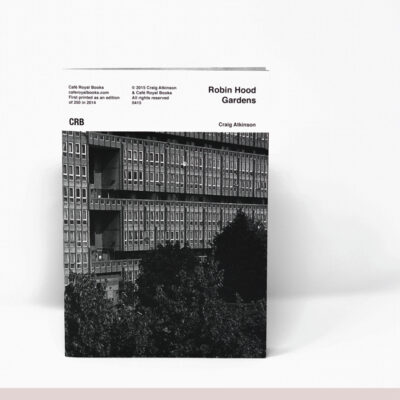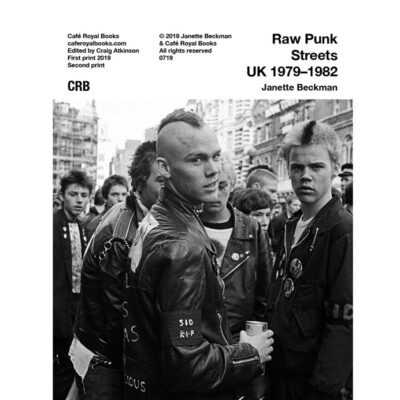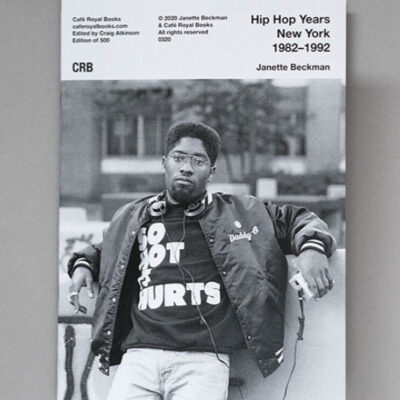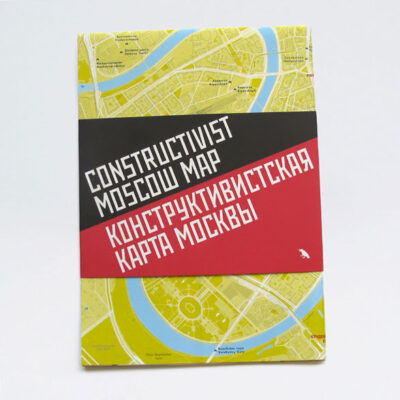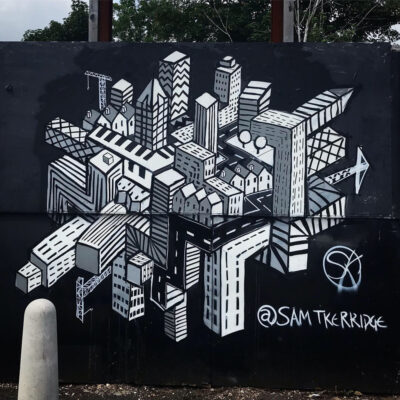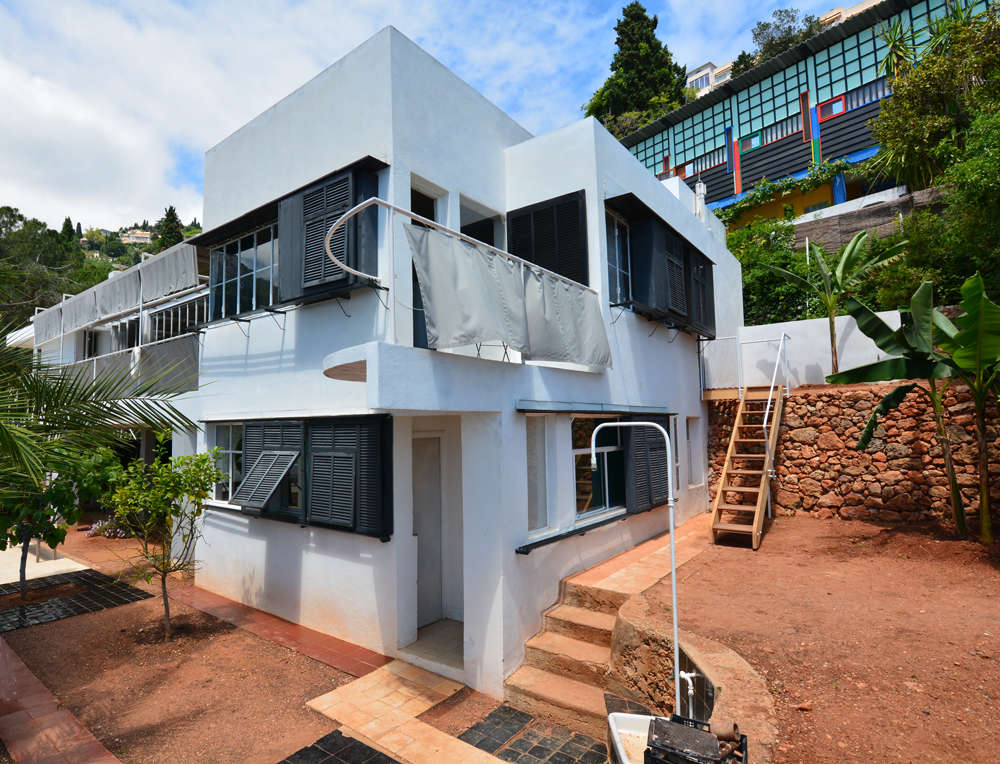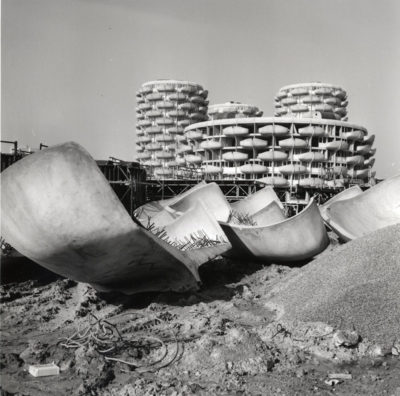Jordane Saget
is leaving his mark on Paris
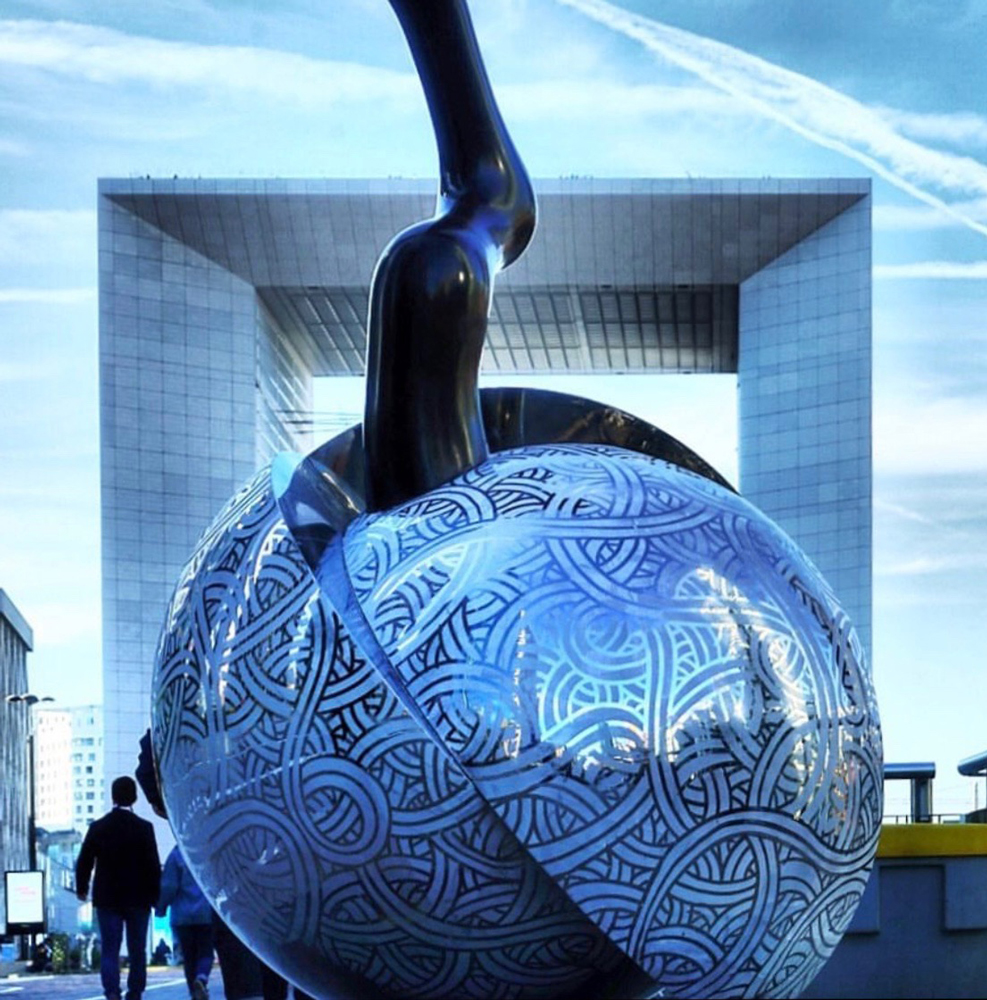
He’s chalking up a stellar reputation with his highly original patterns which keep popping up in the most unexpected places. Recognised more and more as an important creative voice on the Parisienne arts scene, Jordane Saget doesn’t consider himself an artist in the traditional sense.
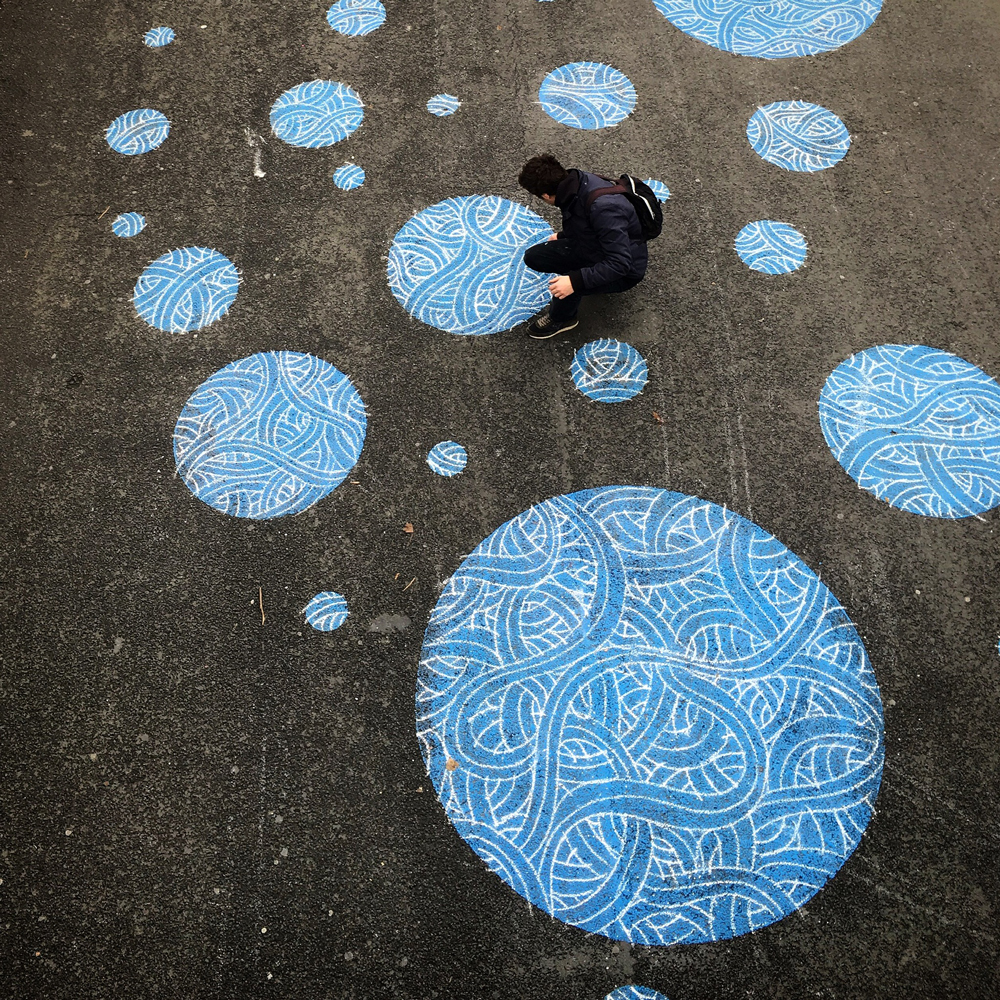
Early experiments were carried out with a pencil, paper and ruler, his work evolved once he decided to take his art out on to the streets of Paris. Using chalk, crushed Blanc de Meudon in particular, Paris became his canvas. Jordane’s art can be seen in expected and unexpected places. He’s not prescriptive about the choice of surfaces, he works on pavements, in stairwells, on handrails, metro entrances and pretty much any flat surface in the built environment. And we haven’t even got onto fashion collaborations.
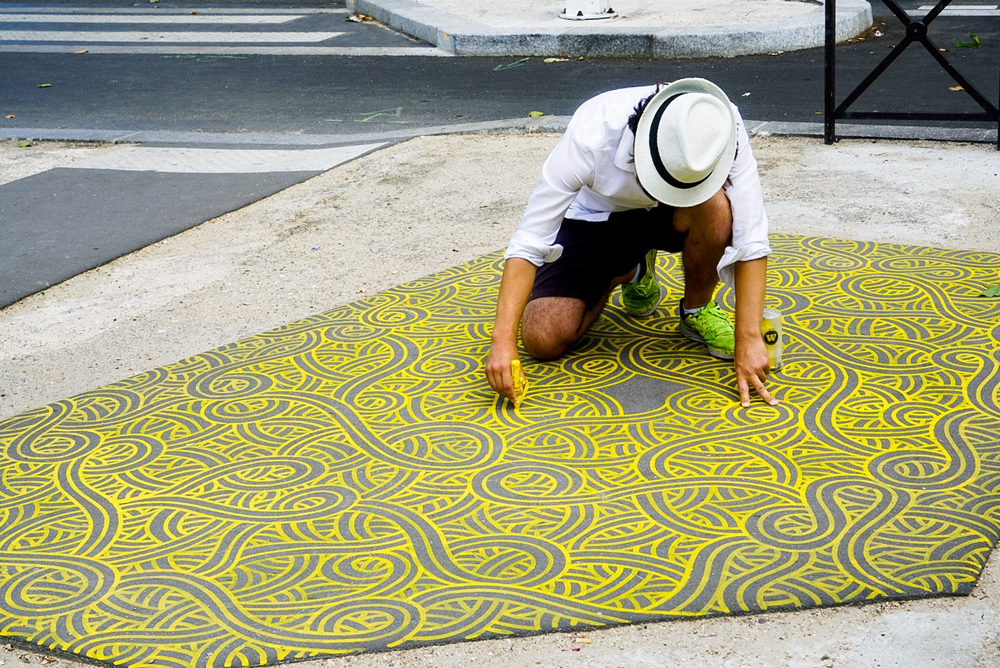
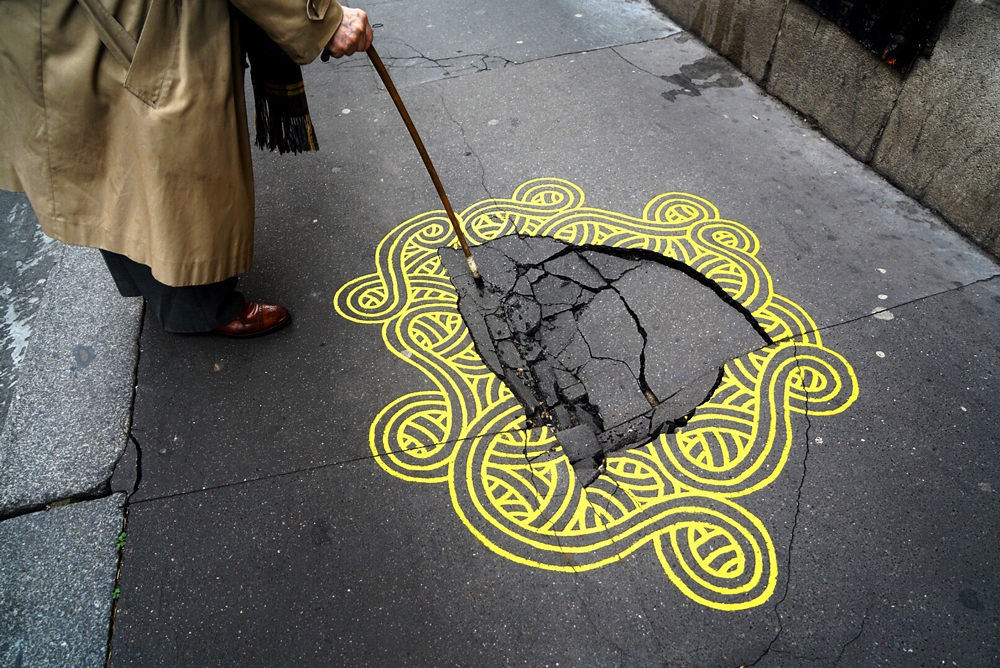
Precision drawing is the expression that comes to mind – the lines are always eight millimetres wide and the patterns always have a three-line aspect but think of that as a jump-off point because then the swirls and arabesques begin to emerge.
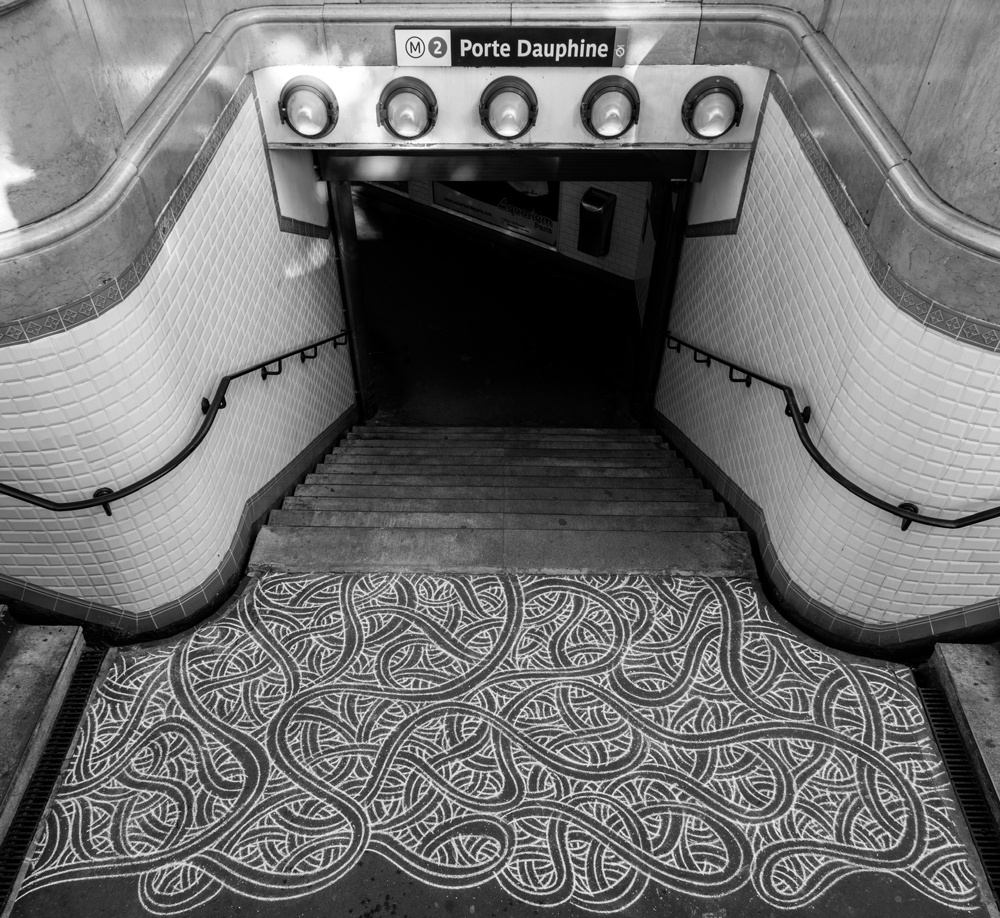
We had a lockdown conversation with Jordane about how the year has been for him;
How do you describe yourself as an artist, a street artist or ….?
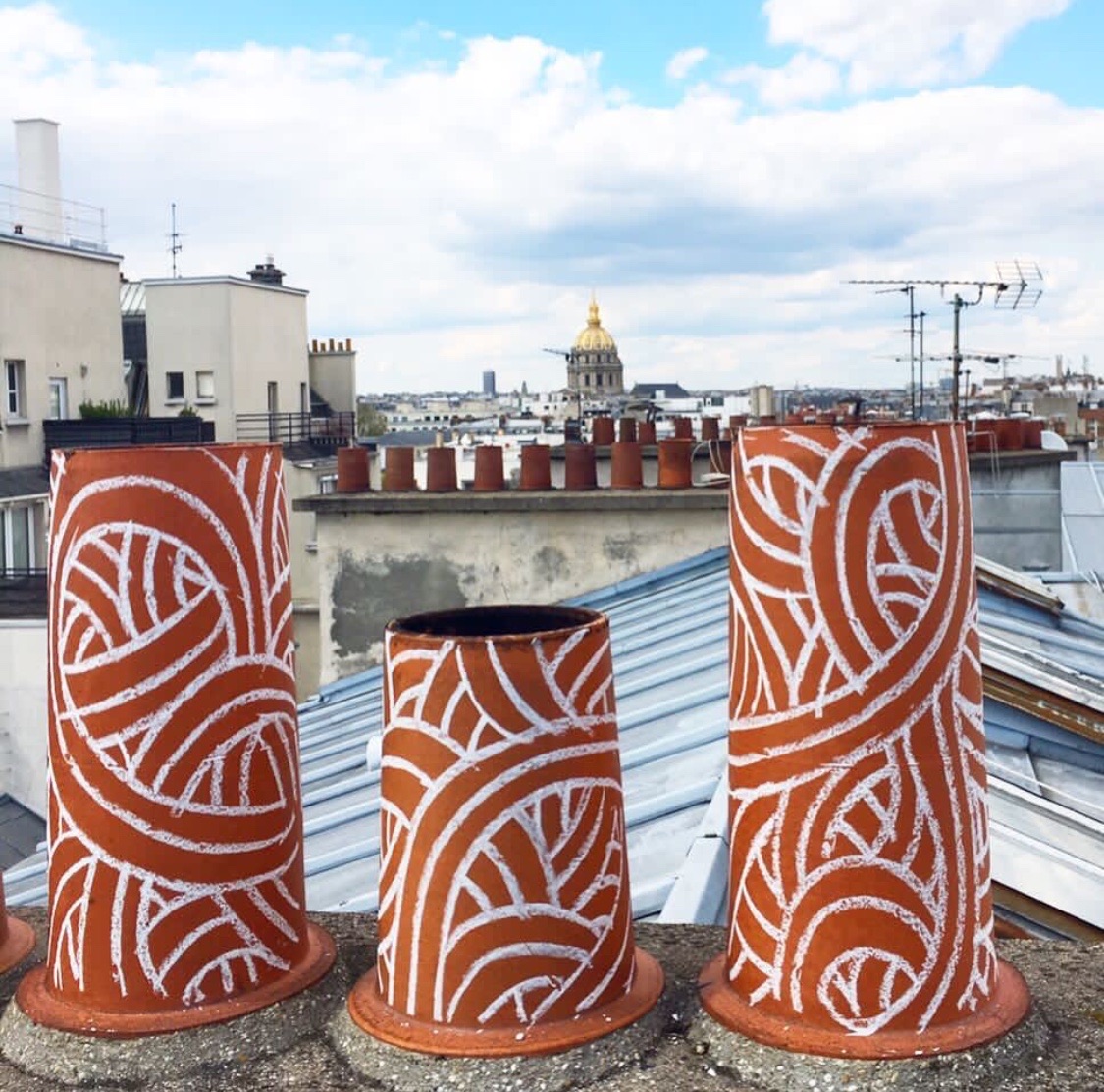
What do you like your art to be called street art, graffiti or something else?
I personally call them the lines, you will notice that I very rarely give my works names, I’m trying to avoid putting them in a rigid framework.
Your work is beautiful and original. How did you become an artist?
I didn’t study art but it was clear at a certain point that I had developed into being an artist. It happened on the street. I noticed that putting a few chalk lines in a public space changed that space and impacted on the way people move around it. I understood in that moment that my lines would become a creative tool.
Can you describe your art? Who and what influences you?
Graphically it’s a network of curved and dancing lines. My art is informed by everything around me, I’m a curious person, influences can be anything from the motion of an artisan stonemason to the movement of the branches of a tree. I can look at a magnificent building with as much curiosity as a slab of paving stone. I’m a T’ai chi ch’üan practitioner and read about Chinese philosophy the influence on the lines with their slow curvy movements is clear.
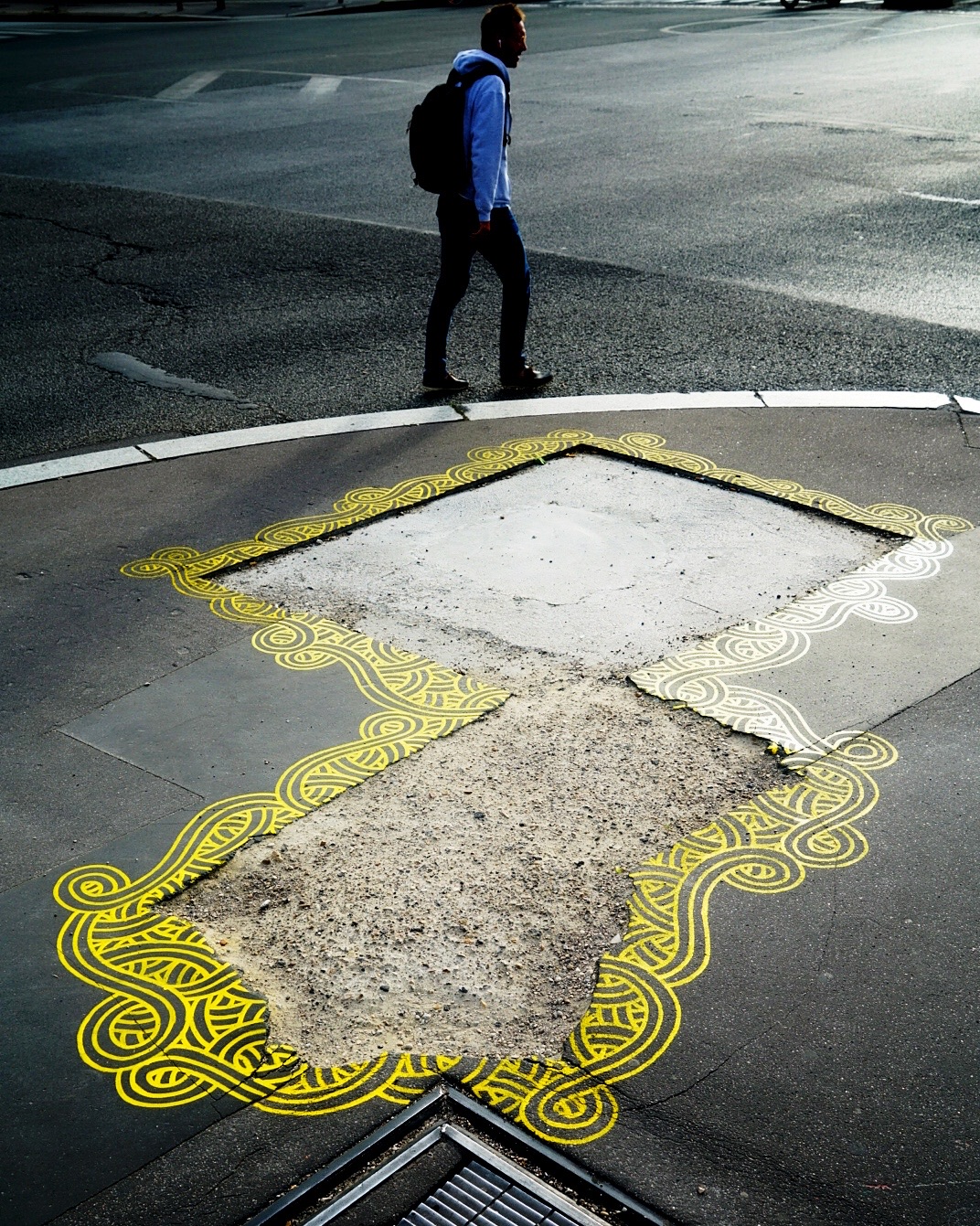
Jordane Saget street art Paris pavement
The word arabesque has been mentioned – what is it and is it an accurate description?
The term, which is used a lot in ornamentation denotes a sinuous and elegant line. I’m okay if it is applied to my designs. Personally, I prefer the lines to self identify.
Do you only work with chalk or other materials and if so are there different types of chalk?
I only use white chalk, the type we used at school. It’s delicate and gives a sense of poetic suggestion far more powerfully than coloured chalk. I also work with Blanc de Meudon mixed with water, applying it using a roller on glass and mirrored surfaces. Historically it was used as a window cleaner at the turn of the century. Once it has dried it leaves a base powder on the surface, I draw by removing some of that surface with my finger.
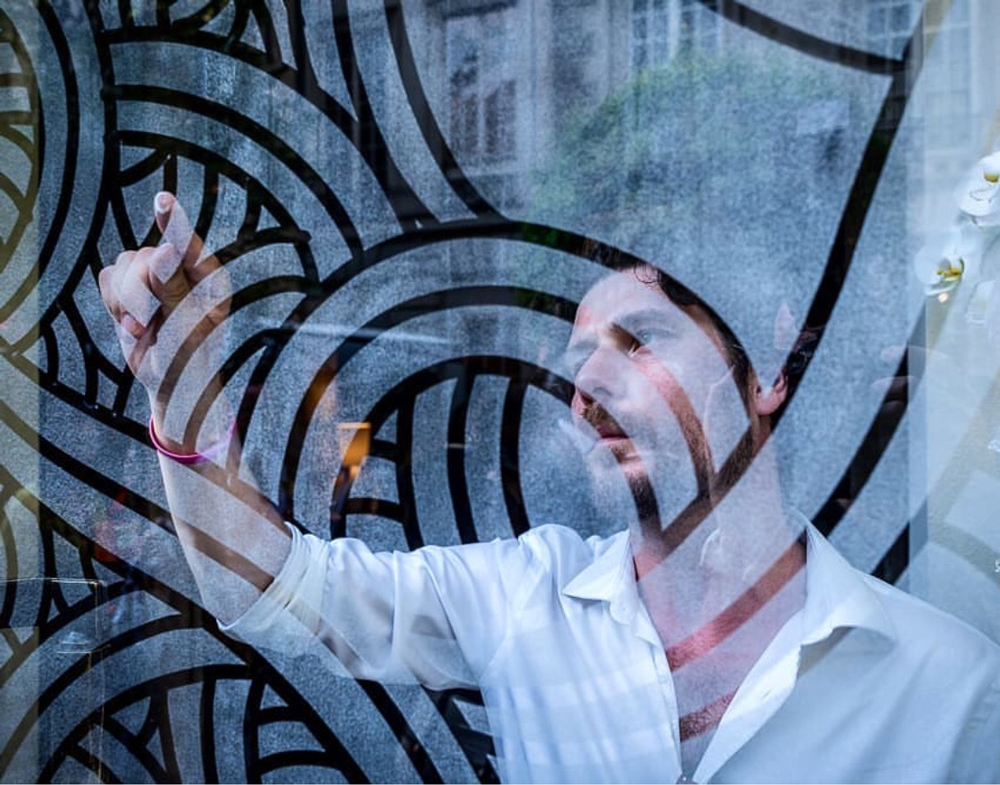
What role do photographs play?
There is the work in situ which can be experienced instantly by passersby and then there is the photographic work which allows me to add a particular narration by the choice of my framing etc.
Do you create work outside of Paris?
Yes, if I’m invited or for special projects. The lines are very adaptable and can fit in all kinds of places and on all sorts of architecture. But they have a strong intimate link with Paris, it isn’t simply that they resonate so well with the Art Nouveau style, it is that they are now well known in Paris.
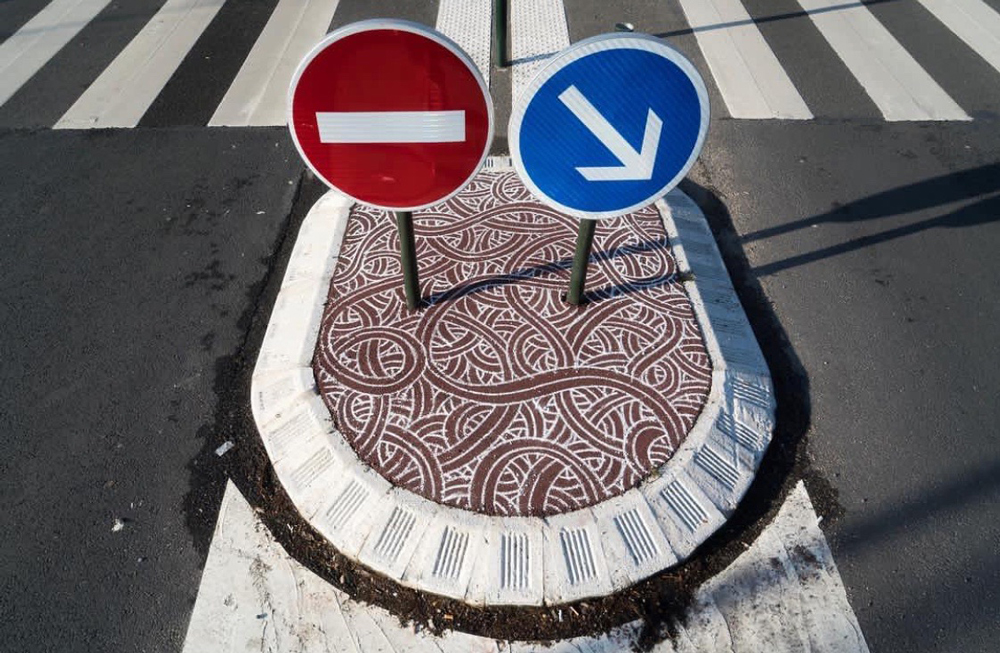
Traffic Islands Jordane Saget Paris
Do you sell your art in galleries?
What draws you to a particular place and do you have a process before you begin?
I always travel with my materials, ready to draw if the opportunity arises. I am constantly looking around, I have developed a great faculty to recognize where the lines resonate best. It’s often obvious. Over the years I have developed a kind of sixth sense to spot a suitable surface to transform or to dress with my lines.
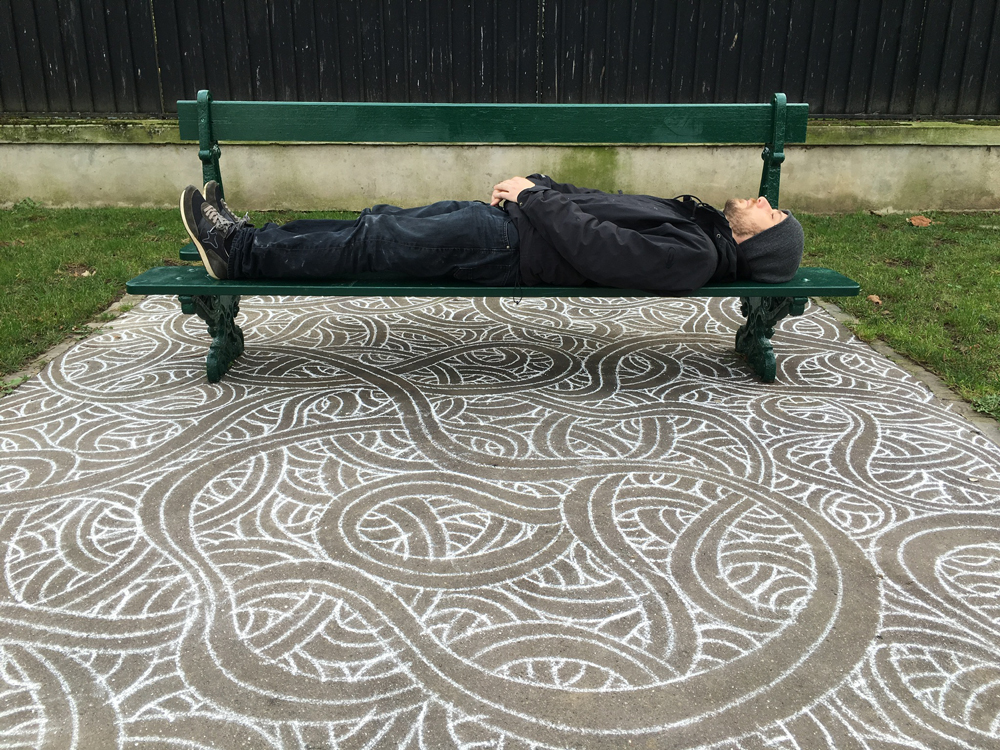
You worked with Agnès B – how did you have to adapt to work with a brand?
The first step is for me to meet the person I’m collaborating with and from there the ideas are woven together. In Agnès B (Agnès Andrée Marguerite Troublé) I met someone who an artist and an exceptional woman. I went into that first meeting with my eyes closed, after that everything evolved in a very natural way.
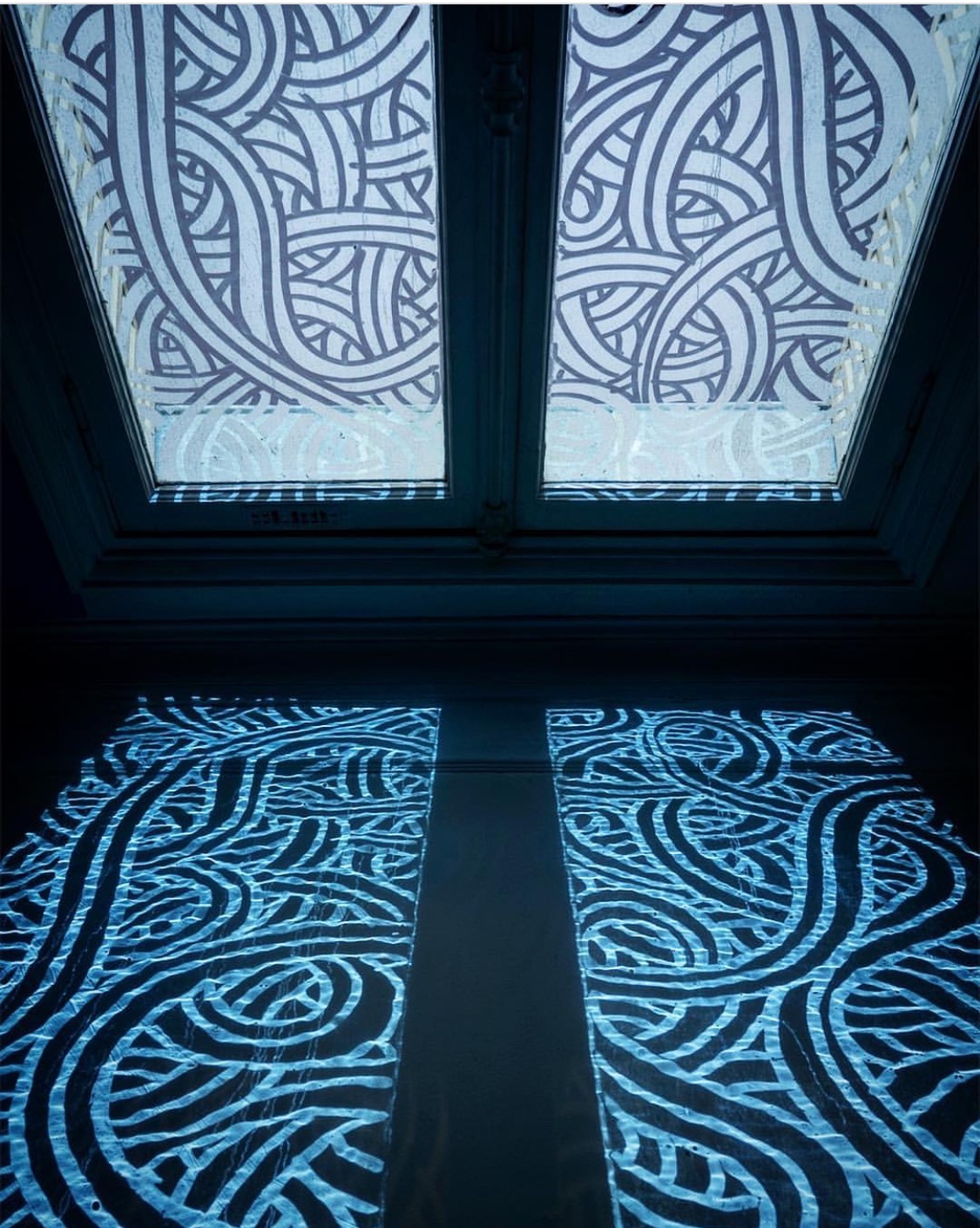
lines on a window Jordane Saget
How has it been for street artists during the pandemic?
In the age of Covid, what have you planned for this year?
I am a little lost at the moment in terms of planning and a little overwhelmed. Projects in the pipeline (though I can’t give more information at the moment) include the stained glass windows of a church, the customization of a car, a stone sculpture, a fresco in a hospital, a new approach on the sidewalks of Paris.
